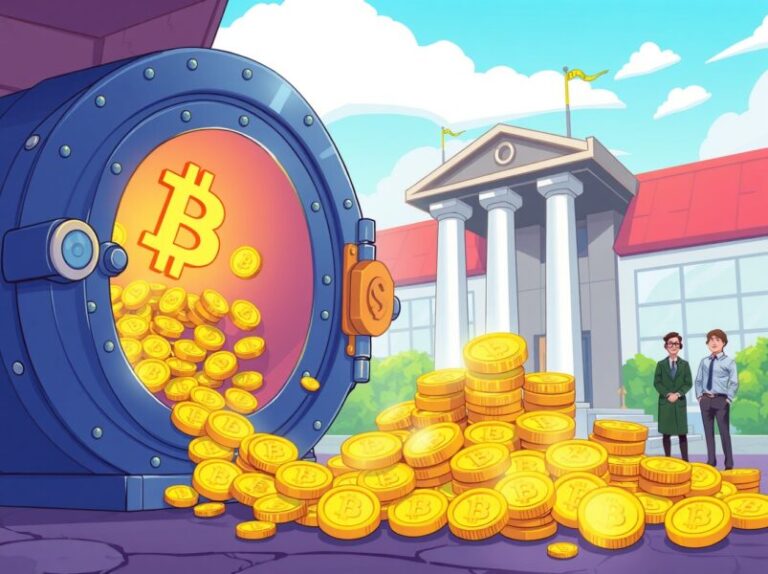The rise of Web3 social media is challenging traditional platform-based models by shifting control from centralized corporations to user-owned, decentralized networks. Unlike Web2 platforms such as Facebook, Twitter, and Instagram—where a few entities dictate content policies, monetize user data, and control algorithms—Web3 social networks prioritize user autonomy, data ownership, and censorship resistance. In this article, …
Web3 Social Media: The Shift from Platforms to User-Owned Networks

The rise of Web3 social media is challenging traditional platform-based models by shifting control from centralized corporations to user-owned, decentralized networks. Unlike Web2 platforms such as Facebook, Twitter, and Instagram—where a few entities dictate content policies, monetize user data, and control algorithms—Web3 social networks prioritize user autonomy, data ownership, and censorship resistance. In this article, we explore how Web3 is transforming social media, the challenges it faces, and what the future holds for decentralized digital interactions.
The Problems with Web2 Social Media
Traditional social media platforms have revolutionized global communication, but they come with significant flaws:
1. Centralized Control and Censorship
Platforms like Twitter, YouTube, and Facebook control what content is promoted, restricted, or banned. This raises concerns about biased moderation, political influence, and lack of free speech.
- Examples:
- Content creators on YouTube face demonetization without transparency.
- Social media bans on controversial figures have led to debates about who decides what’s acceptable.
2. Data Exploitation and Privacy Issues
Users of Web2 social media often do not own their data—platforms collect, sell, and monetize personal information for targeted advertising.
- Examples:
- Facebook’s Cambridge Analytica scandal exposed how user data was exploited for political manipulation.
- Instagram and TikTok track user behavior extensively to optimize engagement and ad revenue.
3. Monetization Inequality
Content creators on Web2 platforms struggle to earn fair compensation, as companies take a significant cut from ad revenue or impose strict monetization policies.
- Examples:
- YouTube takes 45% of ad revenue from creators.
- TikTok creators rely on brand deals due to low earnings from the platform itself.
The Web3 Social Media Revolution
Web3 social media platforms are redefining online interactions by prioritizing user ownership, decentralization, and equitable monetization.
1. Decentralized Content Ownership
Instead of relying on centralized servers, Web3 social networks use blockchains, peer-to-peer (P2P) storage, and cryptographic security to give users full control over their content.
- Examples:
- Lens Protocol allows users to own their social graphs and port them across applications.
- Mastodon, a federated social media platform, lets communities set their own moderation rules.
2. Monetization Through Tokenization
Web3 introduces creator-centric economies through cryptocurrency, NFTs, and decentralized finance (DeFi), enabling direct monetization without middlemen.
- Examples:
- BitClout/DeSo lets users buy and sell “creator coins” linked to influencers.
- Mirror.xyz enables writers to crowdfund articles via crypto tokens.
3. Censorship Resistance and Free Speech
Blockchain-based social networks prevent centralized control over speech, making censorship difficult while giving users more say in content moderation.
- Examples:
- Minds.com rewards users with crypto for engagement.
- Theta and Livepeer offer decentralized video streaming, reducing reliance on platforms like YouTube.
Challenges of Web3 Social Media Adoption
Despite its promise, Web3 social media faces hurdles that must be addressed for mainstream adoption.
1. Scalability and Performance
Blockchain networks still struggle with transaction speeds and high gas fees, which can limit user adoption.
- Solution: Layer-2 scaling solutions, such as Polygon and Arbitrum, improve transaction efficiency.
2. User Experience (UX) and Accessibility
Current Web3 platforms often require crypto wallets, private keys, and complex onboarding, deterring mainstream users.
- Solution: Improved UI/UX design and wallet integrations like MetaMask and Coinbase Wallet make onboarding easier.
3. Content Moderation and Misinformation
Decentralized networks lack the moderation infrastructure of Web2, leading to potential issues with spam, misinformation, and harmful content.
- Solution: DAO-based governance and community-moderated models (e.g., Lens Protocol’s governance framework) can balance free speech and responsible moderation.
The Future of Web3 Social Media
Web3 social media is still in its infancy, but its potential is undeniable. As decentralized identity solutions, blockchain scalability, and improved UX continue to evolve, Web3 platforms may challenge—and even surpass—traditional social media giants.
Key Developments to Watch:
- Integration with the Metaverse: Social interactions in virtual worlds powered by Decentraland, The Sandbox, and Otherside.
- Cross-platform Identity Solutions: Decentralized identity (DID) frameworks enabling seamless logins across platforms.
- AI-Driven Decentralization: Artificial intelligence helping curate content without centralized bias.
Conclusion
The shift from centralized social media platforms to user-owned, decentralized networks marks a new era of digital interaction. While challenges remain, the push for data privacy, fair monetization, and free speech makes Web3 social media an exciting frontier. As technology and adoption improve, Web3 could redefine how we connect, share, and build communities online—putting users firmly in control of their digital experience.









